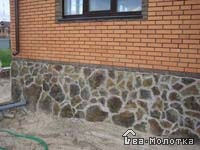Stone for cladding

When selecting stone for stairs, floors and platforms, it is important to know which abrasion group the particular stone belongs to. Rocks are conventionally divided into five groups.
The relation of a material to one group or another depends on thickness of abraded layer at an intensity of 1 million people in a year.
The first group includes quartzites and rocks of the granite group (erasable layer is less than 0.12 mm per year). The second group includes basalts and microcrystalline marble (from 0.12 to 0.35 mm). The third group includes loose basalts, marble, sandstones, dolomites (0.35 to 0.6 mm). The fourth group is formed by marbleized limestone, travertine, limestone, tuffs (from 0.6 to 1.5 mm). The fifth group includes loose limestones (1.5 to 2.5 mm). But belonging to one of the groups is not a linear indication or contraindication for use of the stone type for flooring. If marble is laid on the floor at an underground station through which an average of 4 million people pass in a year, it will serve for about one and a half centuries there. If the same marble is used to revet the stairs in private apartments, grateful descendants of your family will still go up and down stairs in about 500 years.
There are two basic types of fixing stone cladding to the walls and plinth: with adhesive mastics and compounds (the so-called wet method), and the glueless method – through various fastening systems. A combined method is also used when tiles are mechanically fastened to the wall and then the space between the wall and the wall cladding is filled with mortar. In many cases the tiles are not only fastened to the wall, but also interlocked with each other.
The surface area of up to 0.4 m2 and a thickness of up to 10 mm can be bonded to the wall without additional fastening. Larger elements require additional fastening to the wall in addition to the mortar, though. For wet laying, there are restrictions as to the building height. However, there are no specific standards, and the appropriate height is calculated for each project individually. However, as a rule, such restrictions apply to high-rise buildings (5 floors and more).
The only requirement of the building regulations regarding the texture of the stone is related to thickness of the slab. Buchard-treated, sawn and wild stone slabs are thicker and heavier than normal polished slabs and should, therefore, only be laid on mortar, filling the joints with sealant after laying.
Source: www.dvamolotka.ru
